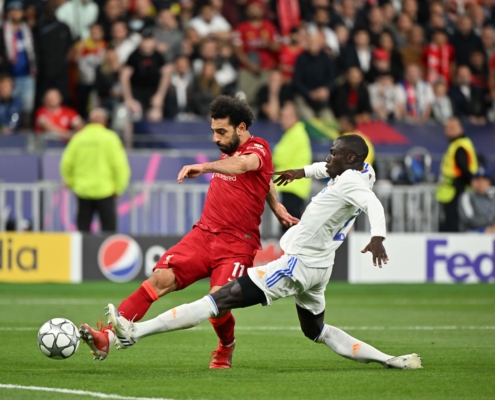Thought Leadership
UEFA Women‘s Euro 2022: TFG’s Guide
12 MIN READ
Thought Leadership
Inspired by what you’re reading? Why not subscribe for regular insights delivered straight to your inbox.
A year later than originally planned UEFA Women’s Euro 2022 is set to get underway in England this summer. As with all major tournaments there are smaller stories and narratives that are set to underpin and shape the tournament. Successfully identifying, explaining, and above all telling these stories is a useful way for rights holders and governing bodies to maximise and build fan connection with the competition. Data is a useful tool in identifying and explaining these narratives, and when used effectively can help to build a deeper connection between fans and the tournament story. Data can also help new fans better understand a tournament with teams and players that might be new to them, building longer lasting connections that grow the fanbase, which for rights holders, sponsors, and broadcasters is critical to growing and realising long-term commercial value.
We have used our models to analyse the data underpinning this year’s Women’s Euros to identify the potential winners, the players to watch, the games not to miss, and much more.
What’s going to happen?
Last week, our projections had Spain as the pre-tournament favourites. However, after the results of the final few warmup games over the weekend and with the news that Alexia Putellas is now out for the tournament, Spain’s chances have dropped by 6 percentage points. Meaning our model now projects England are favourites for the tournament.
Home side England and Spain are the only countries to have a greater than 20% chance of winning. Germany have the best squad on paper but have been unable to show much form on the pitch over the past couple of years. Their sizeable 7-0 defeat of Switzerland last week led to our model improving their chances of winning slightly from 6% to 7%, although Switzerland are expected to be one of the weaker teams in the competition.
By virtue of being the two favourites, we project that Spain vs England is the most likely combination of finalists at 14%. The next most likely combinations are England vs France (7%) and Spain vs Sweden (6%).
What would’ve happened if the tournament was held in 2021 as scheduled?
This tournament should have taken place last summer but was delayed till 2022 after the Summer Olympics and men’s Euros were moved to 2021. The intervening year has boosted England, Austria and Sweden, while the Netherlands and France have suffered a slight downturn in form. Our model would’ve given the Netherlands a 22% chance of reaching the final had the tournament been held last year: we now think their chances are down to 16%.
Who are the players to watch?
Based on club appearances this season, our TFG combined best XI appearing at the tournament is:
Elsewhere, Ada Hegerberg is back from long-term injury, having been the best outfield player in the world from 2017 to 2019 according to our club model. She chose not to play for Norway for almost 5 years in protest against a perceived lack of support for the women’s team. Her recent return to the national team could be significant for Norway’s chances of progressing – we rate their chances of making it to the knockouts as 4 percentage points higher with her in the side.
The potential young star of the tournament is Marie-Antoinette Katoto, who plays as a striker for PSG and France. She’s scored 24 goals in 29 games for France and 108 in 113 for PSG. Our model rates her as the best U23 at the tournament and the second best attacker in the world based on club form this season. Only Sam Kerr rates higher (rated 1050). Other young players to watch out for are Lauren Hemp (Manchester City and England, rated 930) and Lena Oberdorf (Wolfsburg and Germany, rated 965), the 2nd and 3rd ranked U23s in our model.
Who’s missing?
Spain have grown to become the best team in Europe over the past couple of years, matching the rise of their strongest domestic club, Barcelona. They will be without their all-time leading goalscorer at this tournament though, after Jennifer Hermoso was ruled out with a knee injury. She has been a key player for both club and country, scoring 70 goals in 68 games in her most recent spell at Barcelona as well as over a goal every other game for her national team. Her absence reduces Spain’s chances of making the final by 2 percentage points. Spain have also suffered from another significant injury blow with Women’s Ballon d’Or holder Alexia Putellas being ruled out on the eve of the tournament through injury, Putellas’s injury and an underwhelming final warmup result has dented Spain’s chances of making the final by a further 7 percentage points.
Other notable absences include Germany’s Dzsenifer Marozsán (injury) and Amandine Henry: Henry recently starred for Lyon in the women’s UCL final but was left out of the France squad despite still being one of the world’s best midfielders according to our model.
What games should I watch?
The highest quality clash in the first round of fixtures is expected to be the Netherlands vs Sweden. The key player matchup will be Vivianne Miedema vs Magdalena Eriksson: the two have come up against each other frequently for their domestic clubs Arsenal and Chelsea.
Both teams are expected to qualify for the knockouts however, and so the game that looks to have the most jeopardy in the first round of fixtures is Germany vs Denmark. Germany are the favourites with an almost 50% chance of winning, but if they lose then their knockout chances will drop to 22% while Denmark’s will jump to 84%.
Group B also features tournament favourites Spain. The clash between Germany and Spain in the second round of fixtures is our pick of the group stage games and features the highest quality combination of teams. Both sides line up with strong midfields, and the game may hinge on whether Oberdorf, Magull and Däbritz can limit the influence of women’s Ballon d’Or holder Alexia Putellas.
What about England?
England’s toughest group stage opponents are likely to be Norway. This is the first major tournament without Steph Houghton since 2009 for the Lionesses, so if you want to see how their new centre-back pairing of Alex Greenwood (Manchester City) and Millie Bright (Chelsea) fares against the aforementioned Ada Hegerberg, then tune in on 11th July. Should England make it out of the group, they’re likely to face an enticing clash against either Spain or Germany. England vs Germany is the most likely quarter-final combination with a 1 in 3 chance of happening.
We’ll continue to highlight which are the most appealing fixtures and most enticing matchups ahead of each round of games.
If you would like to find out more about our performance intelligence and fan connection services please get in touch.










